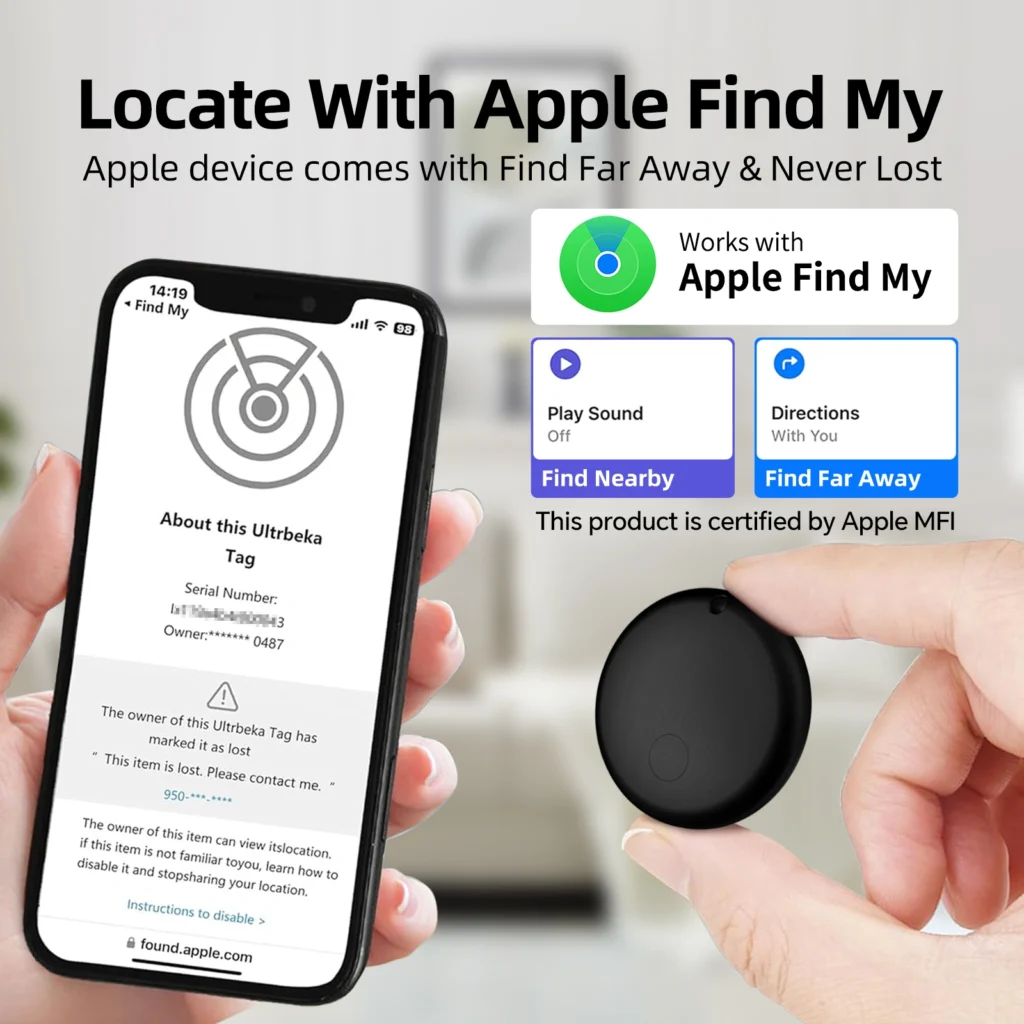Introduction
In the fast-paced modern life, mobile phones, keys, wallets, luggage and other small items have long become our travel, work, life an indispensable part. However, these items are small and easy to lose. Once they are lost, they often cause a lot of trouble.
For this reason, there are two main types of location devices on the market: anti-lost devices and GPS trackers. They both claim to help users“Find things” or“Locate in real time”, but in fact, the two are fundamentally different in terms of technical principles, usage scenarios and costs.
This article delves into the core differences between anti-lost devices and GPS trackers to help you make the most appropriate choice based on your actual needs.
Second, what is the anti-lost device (Bluetooth tracker) ?

anti-lost devices, also known as Bluetooth trackers or tracking tags (e.g. , Apple Air Tag, Tile) , are small pieces of smart hardware designed to help us quickly locate everyday objects that are easily mislaid. It’s not a real-time tracking device, but rather a high-tech“Finder”, with low energy Bluetooth (BLE) technology and a clever“Crowd-sourcing network” at its core.
How it works: dual close-and long-range modes
Close-up search: making objects“Sound”
Within the range of a Bluetooth connection (usually 10 to 80 meters, depending on the environment) , you simply click on the App and the anti-lost device beeps or lights up, guiding you to it with ease. Some high-end models, such as the Air Tag, even support ultra-wideband (UWB) technology and offer“Pinpoint” features that take you step-by-step to your destination with arrows and distance indicators on the phone’s screen.
Long-range location: a powerful crowd-sourcing network
That’s the real magic of anti-lost devices. When you lose something out of Bluetooth range (e.g. , you left your backpack at the coffee shop) , it launches a crowd-sourcing network (or community-sourcing network) . Here’s how it works:
- your lost anti-lost device will continuously and anonymously broadcast an encrypted Bluetooth signal.
- any user with an App of the same brand (such as the iPhone on Apple’s“Find My” network) passes through its range and the phone automatically picks up the signal.
- The phone anonymously encrypts location information and uploads it to a cloud server to protect privacy.
- The server then pushes the latest location to your App.
The effectiveness of this network depends on the number of users. The denser the area of users (e.g. cities) , the higher the speed and accuracy of location updates.
Core strengths and weaknesses
Pros:
Small, light and easy to carry
Low power consumption, battery life of more than a year
The device is affordable and has virtually no follow-up costs
Cons:
Poor performance in remote areas due to reliance on user density
not real-time tracking, location update with delay
suitable for stationary objects, it is difficult to track moving targets
Scenarios
- keys, wallet, backpack, suitcase, remote control, camera, etc.
• for the daily“Where Did I put it?”
What is a GPS tracker?
Unlike anti-lost devices, which rely on the power of crowd sourcing, GPS trackers are more powerful stand-alone location devices. It is designed to track the location in real time and is widely used in vehicles, pets, personnel and other scenarios.
Key technology: GPS + cellular network
GPS trackers work out the exact location in real time, usually within 5-10 meters, by receiving satellite signals. The device has a built-in SIM card that sends location information to the user’s phone or computer in real time over a 4G/5G cellular network, ensuring that the user is always aware of the target’s location.
How it works
- The device gets GPS coordinates
• Sending data to a cloud server over a cellular network
• Users see their location in real time via mobile apps or web pages
Some high-end products also support:
• History Review
• Electronic Fence Alert (automatic push alert for trespassing)
• SOS button
Core strengths and weaknesses
Pros:
Global real-time location (apparent cellular coverage)
precise positioning and rich functions
It can be used to track people, vehicles, pets and assets
Cons:
The device is relatively bulky
high power consumption, requiring frequent charging
devices are expensive and require long-term SIM card payments
Scenarios
- Vehicle Theft Prevention and real-time tracking
• Location and tracking of pets
• location-based care for children and the elderly
• Tracking valuable goods and equipment
A list of core differences
Features | anti-lost (Bluetooth tracker) | GPS tracker |
Key Technologies | Bluetooth + crowd sourcing | GPS + cellular network |
Tracking Range | Limited (near)/dependent community (far) | Global (cellular only) |
Real-time | Non-real-time, location updates with latency | Real-time or quasi-real-time tracking |
Positioning accuracy | In general, affected by Bluetooth | High |
Equipment costs | Lower | Higher |
Follow-up costs | Next to nothing | There is a monthly/annual subscription fee |
Battery life | (about 1 year) | Short, requiring frequent recharging |
Size weight | Small and light | Relatively large |
Major uses | Looking for everyday objects | People, pets, vehicles, asset tracking |
How to choose: which one do I need?
Which one you choose depends on your actual needs and budget, not just“Which is better”.
1. Scenario analysis
- Keys, wallet, remote-recommended anti-lost device
• Guarding against vehicle theft and valuable assets-GPS trackers are a must
• location-based care for pets, the elderly and children-recommended GPS trackers
• loss of baggage protection-in most cases, anti-loss devices are adequate. GPS trackers are recommended if real-time control is required
• cost considerations
Anti-lost device: one-time investment, low cost, suitable for mild needs of users
GPS tracker: Device Price + continuous data charges, suitable for high-intensity real-time tracking needs
3. Three-step decision making process
Clear Question: search for stationary objects or track moving objects?
• Identification: Keys, luggage, pets, vehicles, people?
• Assessing Budget: will continuing subscription fees be accepted?
Vi. Conclusion
anti-lost devices and GPS trackers are for different needs:
• anti-lost devices: low-cost, long-lasting devices that are great for finding gadgets
• GPS Tracker: powerful, fear-free at distance, ideal for real-time, safe tracking
• There is no such thing as“Better”, only“Better”. Only by making clear demands and making rational choices can we truly solve the“Loss anxiety”.







